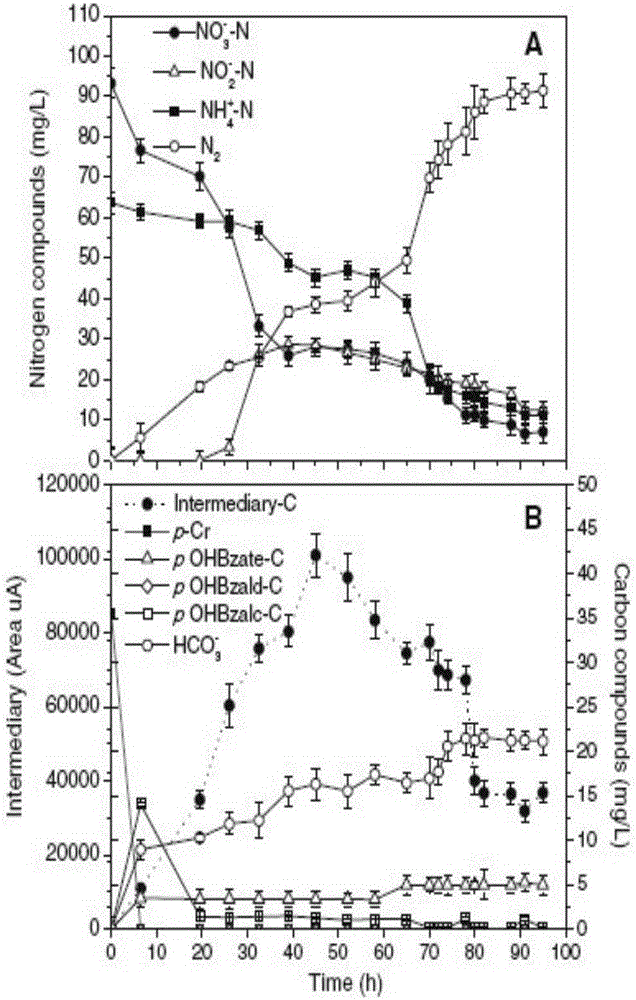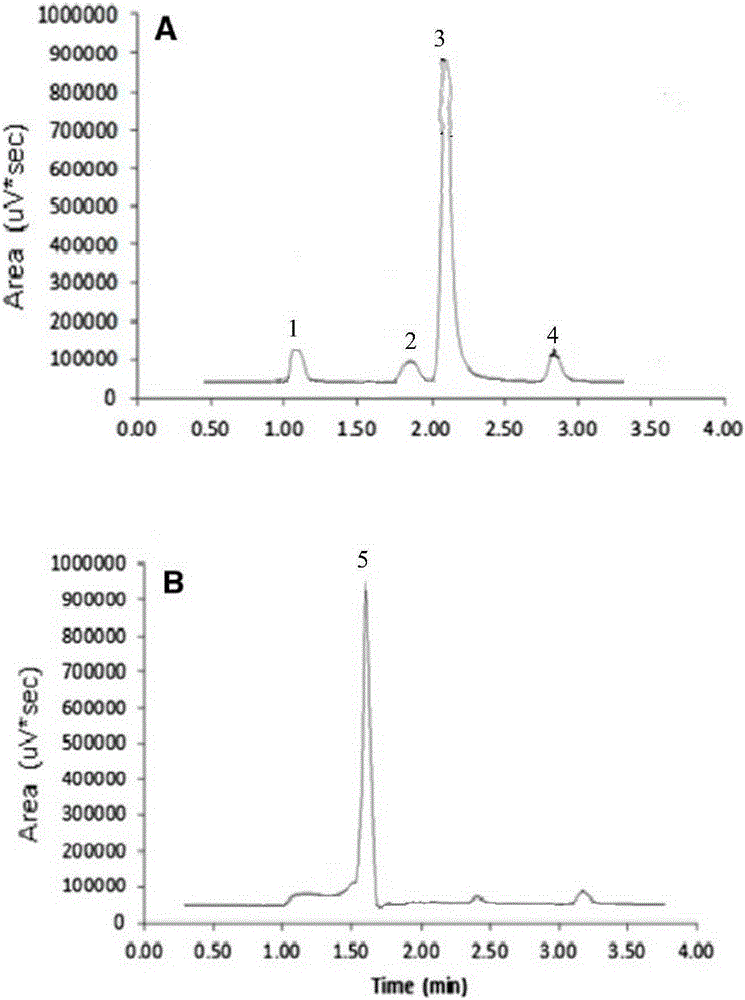Method for synchronously removing paracresol, ammonia nitrogen and nitrate in waste water
A technology of p-cresol and nitrate, which is applied in chemical instruments and methods, water pollutants, water treatment parameter control, etc., can solve problems such as process coupling failure and application limitations, achieve high treatment efficiency, reduce energy consumption, and run The effect of low cost
- Summary
- Abstract
- Description
- Claims
- Application Information
AI Technical Summary
Problems solved by technology
Method used
Image
Examples
Embodiment 1
[0023] First, the sludge from the secondary settling tank of the urban sewage treatment plant was used as the seed sludge, which was added to the anaerobic SBR reactor, and then according to Ac - -C / NO 3 - -N (mass ratio) is 2.0, NO 3 - -N / NH 4 + -N (mass ratio) is 5.0, add nitrate, acetate and ammonia nitrogen to the influent, at a temperature of 30°C, a pH value of 7.5, and a hydraulic retention time of 24 hours, to domesticate heterotrophic denitrifying microorganisms, Oxyammox microorganisms, when the removal rate of nitrate, acetate and ammonia nitrogen in the system reaches 85%, the two types of microorganisms reach a balance through competition and synergy, and the domestication is completed; 2. At a temperature of 30°C and a pH of 7.5, Under the condition of hydraulic retention time of 96 hours, according to p-Cr-C / NO 3 - -N (mass ratio) is 0.4, NO 3 - -N / NH 4 + -N (mass ratio) is 1.5, and the water volume load (in N) is 2.0kgN / m 3 d, Passing waste water co...
Embodiment 2
[0025] 1. First, the sludge from the secondary settling tank of the urban sewage treatment plant is used as the inoculation sludge, which is added to the anaerobic CSTR reactor, and then according to Ac - -C / NO 3 - -N (mass ratio) is 3.0, NO 3 - -N / NH 4 + -N (mass ratio) is 6.0. Add nitrate, acetate and ammonia nitrogen to the influent. Under the conditions of temperature 20°C, pH 8.0, and hydraulic retention time 72 hours, heterotrophic denitrifying microorganisms, anaerobic Ammonia oxidizing microorganisms, when the removal rate of nitrate, acetate and ammonia nitrogen in the system reaches 85%, the two types of microorganisms reach a balance through competition and synergy, and then complete domestication; 2. At a temperature of 30°C, a pH of 8.0, hydraulic Under the condition of residence time of 8 hours, according to p-Cr-C / NO 3 - -N (mass ratio) is 1.0, NO 3 - -N / NH 4 + -N (mass ratio) is 1.0, and the water volume load (in N) is 1.0kgN / m 3 d, pass into waste ...
Embodiment 3
[0027] 1. Firstly, the anaerobic digested sludge of the urban sewage treatment plant is used as the inoculation sludge, which is added to the anaerobic EGSB reactor, and then according to Ac - -C / NO 3 - -N (mass ratio) is 2.5, NO 3 - -N / NH 4 + -N (mass ratio) is 5.5. Add nitrate, acetate and ammonia nitrogen to the influent. Under the conditions of temperature 35°C, pH 8.5, and hydraulic retention time 36 hours, heterotrophic denitrifying microorganisms, anaerobic Ammonia oxidizing microorganisms, when the removal rate of nitrate, acetate and ammonia nitrogen in the system reaches 87%, the two types of microorganisms reach a balance through competition and synergy, and then complete domestication; 2. At a temperature of 35°C, a pH of 8.5, hydraulic Under the condition of residence time of 72 hours, according to p-Cr-C / NO 3 - -N (mass ratio) is 0.8, NO 3 - -N / NH 4 + -N (mass ratio) is 0.8, and the water volume load (in N) is 0.6kgN / m 3 d, pass into waste water conta...
PUM
 Login to View More
Login to View More Abstract
Description
Claims
Application Information
 Login to View More
Login to View More - R&D
- Intellectual Property
- Life Sciences
- Materials
- Tech Scout
- Unparalleled Data Quality
- Higher Quality Content
- 60% Fewer Hallucinations
Browse by: Latest US Patents, China's latest patents, Technical Efficacy Thesaurus, Application Domain, Technology Topic, Popular Technical Reports.
© 2025 PatSnap. All rights reserved.Legal|Privacy policy|Modern Slavery Act Transparency Statement|Sitemap|About US| Contact US: help@patsnap.com



